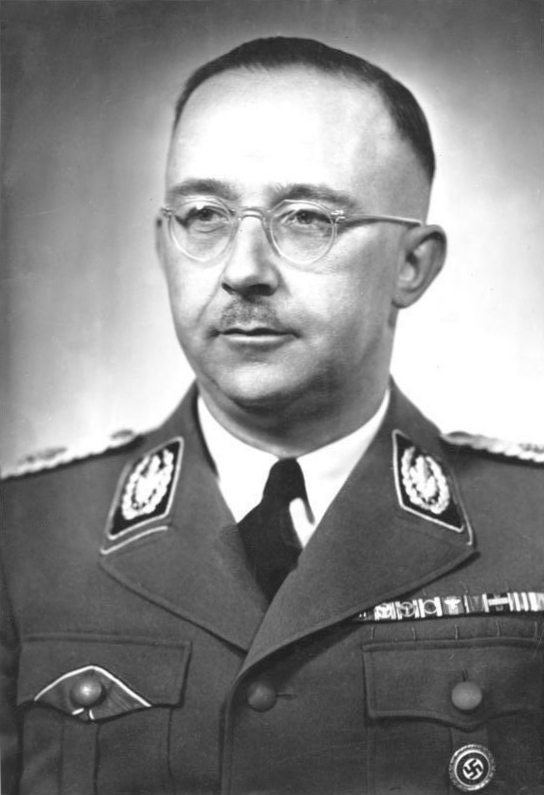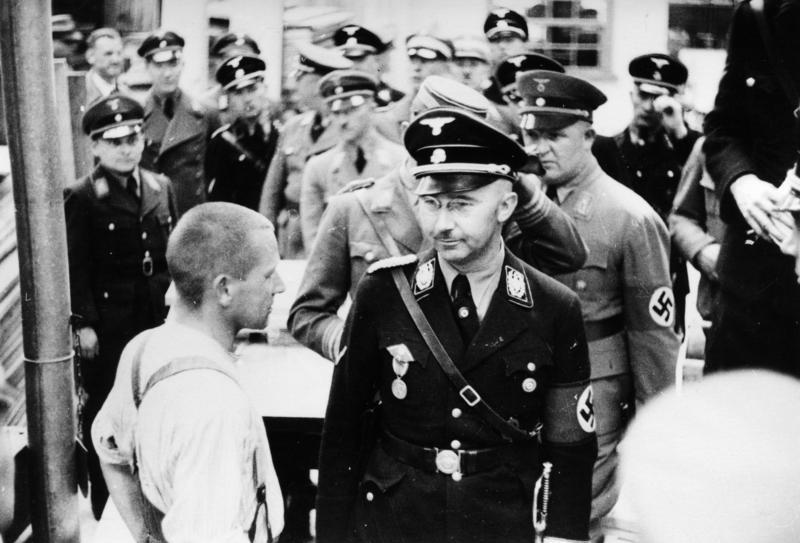With his rimless glasses and small physique, Heinrich Himmler’s appearance was at odds with his fearsome manner. Indeed, one English visitor observed, ‘nobody I met in Germany is more normal.’ A German officer described Himmler’s ‘slender, pale and almost girlishly soft hands … He looked to me like an intelligent elementary schoolteacher, certainly not a man of violence.’
Chicken farmer
 Heinrich Himmler was born the son of a Catholic schoolteacher in Munich on 7 October 1900. After a stint in the army during the First World War, although he missed out on seeing active service, Himmler studied agriculture and held a number of jobs including that of a chicken farmer and a fertilizer salesman before joining the Nazi Party in 1921.
Heinrich Himmler was born the son of a Catholic schoolteacher in Munich on 7 October 1900. After a stint in the army during the First World War, although he missed out on seeing active service, Himmler studied agriculture and held a number of jobs including that of a chicken farmer and a fertilizer salesman before joining the Nazi Party in 1921.
Hardworking and meticulous, Himmler became devoted to Hitler and the Nazi cause. He took part in the failed putsch of 1923 in which Hitler tried to seize power in Bavaria. Between 1926 and 1930, Himmler acted as the Nazi party’s propaganda leader until, in 1929, Hitler appointed him head of the SS.
In 1934, Himmler became head of the Prussian division of the Gestapo and, two years later, head of all Nazi security organs. In 1933, soon after Hitler’s coming to power, Himmler established the first concentration camp at Dachau, near Munich, and in 1934, played a vital role in the elimination of Hitler’s opponents during the ‘Night of the Long Knives‘.
A page of glory
During the war, Himmler was responsible for co-ordinating the systematic murder of Jews and other victims of the Nazi regime, extending and expanding the network of concentration and death camps, and responsible for implementing the ‘Final Solution’.
 Himmler suffered from various psychosomatic illnesses and intense headaches and was shocked and sickened by what he saw when visiting the camps he administered. Yet he remained determined that the work should continue, however distasteful.
Himmler suffered from various psychosomatic illnesses and intense headaches and was shocked and sickened by what he saw when visiting the camps he administered. Yet he remained determined that the work should continue, however distasteful.
On 4 October 1943, addressing an audience of SS officers in Posen, he said, ‘Whether or not 10,000 Russian women collapse from exhaustion while digging a tank ditch interests me only in so far as the tank ditch is completed for Germany … This is a page of glory in our history, which has never been written and is never to be written…. We had the moral right, we had the duty to our people, to destroy this people which wanted to destroy us.’
On another occasion, he compared Anti-Semitism to delousing: ‘Getting rid of lice is not a question of ideology, it is a matter of cleanliness.’
In 1943, Himmler was appointed minister of the interior, and expanded the Waffen-SS, the Armed SS, to the point its strength rivaled the regular German army.
Himmler had his homosexual nephew, Hans, sent to the Dachau concentration camp where he was forced to wear a pink triangle and was eventually executed.
As the war turned against Germany, Himmler sought peace negotiations with the Western allies in order to carry on the fight against the Soviet Union. Labelled a traitor by Hitler, he was stripped of all his responsibilities.
Sergeant Hitzinger
After Germany’s surrender, Himmler tried to escape detention, dressing up as an army sergeant under the name Heinrich Hitzinger, shaving off his moustache and sporting a patch over one eye. Caught by the British near the northern German town of Lüneburg, Heinrich Himmler committed suicide by poison before the British could bring him to trial. His final words, said as he swallowed the poison, were, ‘I am Heinrich Himmler’. He was buried in an unmarked grave. His death mask is on display at London’s Imperial War Museum.
 Gudrun Burwitz
Gudrun Burwitz
Heinrich Himmler was married in 1928 to Margarete Boden. They had one child, a girl, Gudrun, born 8 August 1929. (Pictured is Gudrun with her parents). Gudrun Burwitz, who died, aged 88, in 2018, had been a member of the Stille Hilfe (‘Silent Help’) organization since its inception in 1951, an organization that helped, and continues to help, former SS members. The ‘Princess of Nazism’, as she was once described, remained committed to aiding former National Socialists and neo-Nazis to the very end.
 Rupert Colley.
Rupert Colley.
Read more in The Clever Teens’ Guide to Nazi Germany, available as ebook and paperback (80 pages) on Amazon, Barnes & Noble, Waterstone’s, Apple Books and other stores.